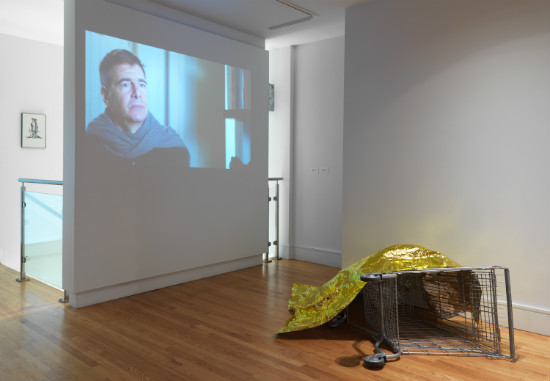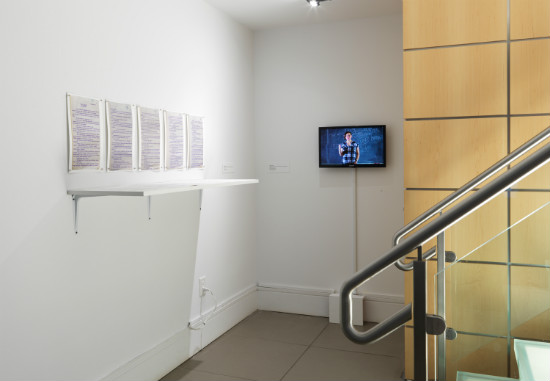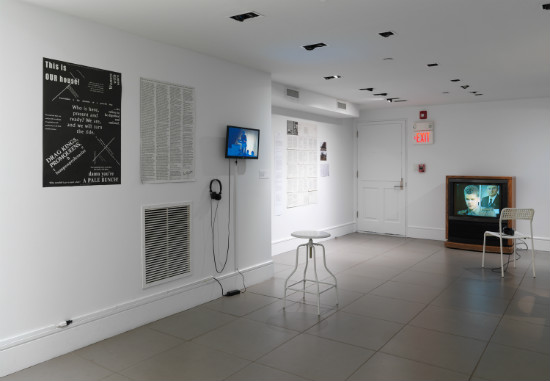
Since the 2016 Presidential election, some within the American left have suggested the existence of an inherent tension between advocating for the working class and being an inclusive movement for those of all sexualities. (This article from Slate has a good overview of the debate.) The art in the recent show “The Work of Love, The Queer of Labor” at Franklin Street Works stands as a welcome counterargument to that. The art featured within examines areas in which queer sexuality and issues surrounding the working class overlap. The scope of these works is international, covering a century of history; the result is an illuminating look at the place where these two movements converge.
In some cases, these connections are inherent in the subject covered. YES! Associate/Foreningen JA!’s New Spelling of a Street – A Tribute to Audre Lorde chronicles the Swedish art group’s attempts to have a street in Stamford renamed in honor of the writer/activist in question. Lorde worked for a time in Stamford in the 1950s, a period of her life that, this work argues, was both personally and professionally significant for the life and work that followed. And Noah Gonick’s short film 1919 is shot in the style of a silent film of the period, though its depiction of that year’s Winnipeg General Strike–and the way that it brought together questions of sexuality and working-class revolutionary impulses–abounds with a modern playfulness and irreverence.

One of the most striking pieces in the show was Hagra’s Evening With the Bros, which used a branching narrative structure–yeah, I’ll invoke the Choose Your Own Adventure series for perhaps the only time when describing a work of art–to examine one working-class man’s potential activities after his day at his job ends. It’s a work that embraces contradictions: the artwork is loose and stylized, but the subject matter invokes a number of big ideas. The fact that this work comes from Russia, where sexuality is policed by the government, adds another layer into the mix.
Several other works also address questions of sexuality and the rise and fall of Communism in Europe. Not suitable for work: A Chairman’s Tale, by Jaanus Samma, addresses the life of a prominent political figure in Soviet-era Estonia, moving from a dossier outlining accusations made against him and his sentencing to a stylized film about the end of his life. A number of other works in the show elucidate how the rise and fall of the Soviet Union, and how revolutionary potential calcified into regressive and repressive politics–and how the aftermath of the end of the USSR fragmented some of these same issues.

The overall impact of the works in “The Work of Love, The Queer of Labor” is a considerable one. But for all that they grapple with heatedly-debated issues, they also showcase intriguing ways to raise the levels of the aforementioned debate. There’s a sense of unpredictability here, and a welcome window into a panoply of points of view. Questions of labor and sexuality are likely to remain on the minds of many; the art in this show demonstrates new ways of considering both.
Follow Vol. 1 Brooklyn on Twitter, Facebook, and sign up for our mailing list.
